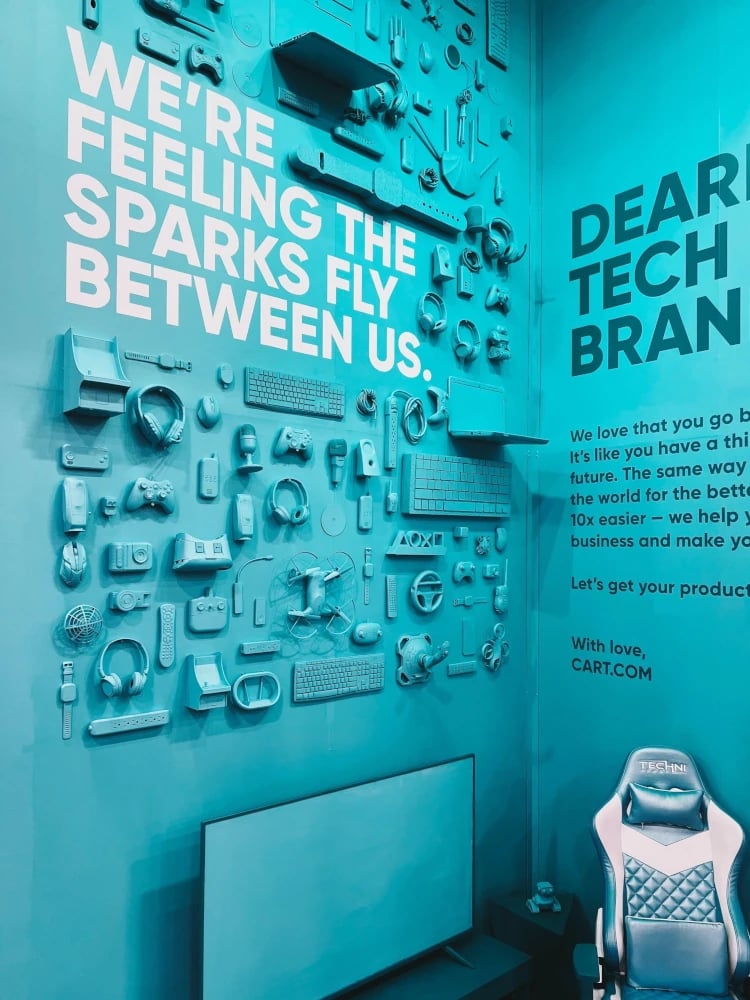Think about your favorite apparel brands – the ones you feel excitement and happiness for as you unbox your order. It’s a sensory experience: The look, feel and ease of opening something. The most memorable packaging often has special touches. It stands out. Maybe it includes a note, an aesthetically appealing or recognizable graphic or a clever way to reuse the box. It may also be eco-friendly, demonstrating a brand’s commitment to sustainability.
Ultimately, whether you self-fulfill or outsource fulfillment, how you package and ship apparel (i.e., clothing, shoes, accessories) is critical to the customer experience and satisfaction. From an ecommerce retailer’s perspective, a packing and shipping strategy is also an opportunity to optimize your overall shipping costs. This means that when you talk about packing and shipping, you’re considering how best to ship and what it will be like to receive.
In this article, we’ll delve into why packaging is essential to the unboxing experience, how to package for consumers and save on shipping costs, and how a 3PL can help with packaging and shipping apparel.
A growing trend: The unboxing experience
According to YouTube data, the amount of time people have spent watching unboxing videos just on their phones is equivalent to watching the holiday classic “Love Actually” more than 20 million times. Moreover, the combination of influencer unboxing and amount of YouTube consumption demonstrates that packaging continues to be a critical part of ecommerce.
But what works? According to the annual Macfarlane Packaging survey, 61% of consumers get more excited about a parcel arriving if the packaging is branded. It’s seen as personalized and premium. The results also found that 52% of consumers are likely to purchase again from a retailer if their delivery arrives in premium packaging.
What does branded, premium and personalized packaging look like?
The packaging customers receive and the unboxing experience should align with your digital and physical customer journey. Packaging should be recognizable – buyers know it’s your brand upon receipt.
Premium can mean any number of things. It depends on your customer. For example, Burberry’s packaging reflects the high-end luxury the brand is known for. It’s sleek and affluent yet highlights their dedication to responsible sourcing and sustainability. Customers would undoubtedly describe it as premium.
Puma, a much sportier brand, could be described as premium too. It’s bright and familiar, and some items feature the brand’s “clever little bag,” which is a distinguishing touch. Again, Puma amplifies its commitment to sustainability and makes sure their customers see it.
Packaging and shipping considerations for apparel
The goal is to create memorable packaging that improves the customer experience while remaining cost-effective. In the age of fast and free shipping, ecommerce retailers must ensure that the full cost of shipping doesn’t hurt revenue. Brands can get creative while employing strategic tactics. They should consider:
Creative apparel packaging
Think about investing in packaging that helps you stand out. It doesn’t have to be a large investment – even small details can make a difference. Try things like:
- Custom boxes
- Logo stickers
- Adding a catchy phrase
- Brand colors
- Seasonal packaging
- Adding gifts or freebies
Unique material elements
Improve the delivery experience beyond the exterior packaging. A note, custom tissue, more phrases or placing clothing in a custom tote bag.
You can add branding with QR codes or tag lines that promote your value proposition. Whatever you do, think creative, personalized and one-of-a-kind.
Reducing packaging materials
Ecommerce businesses must keep an eye on their expenditures. A common mistake is to get too wrapped up in the branding. Keep in mind that it’s just as important to focus on how costs affect your bottom line.
Many of today’s carriers use dimensional (DIM) weight. The aim is to minimize your package’s measurements to fit more in a truck. Companies like FedEx and UPS will calculate both DIM weight and actual weight (pounds) and use the higher of the two. Since apparel is often lightweight, reducing your package size and materials can help lower costs, decreasing the effect on your bottom line.
Several innovative packaging ideas help accomplish this. For example, t-shirts can be shipped with tubes, thin boxes, tins, cans or sturdy cardboard envelopes. Research the different ideas used to ship your apparel items.
Sustainable practices
Reducing packaging materials is one way to be more sustainable. However, brands are working to do more as customers become more eco-conscious, with 69% of consumers saying sustainable shipping has influenced their past purchases. Some easy ideas to implement are:
- Recycled hang tags
- Recycled poly mailers
- Compostable stickers, mailers, garment bags, shipping labels or tissue paper
- Paper materials (as opposed to plastic)
- Biodegradable materials
- 100% recycled
Shipping strategy
Even when you’ve reduced weight and DIM weight, there are still strategies for shipping cost-effectively. Think about the type of shipping: Air, land, etc. What costs less? Consider ways to keep inventory closer to customers, either with micro-fulfillment centers, fulfillment hubs or a multi-node fulfillment network.
You can also provide incentives. For example, encourage customers to combine orders for a discount or charge more for expedited shipping. If free and fast shipping is a must for your customers, think about how you can make that happen without it impacting your business too much. Look at different pricing across carriers and negotiate when possible.
How a 3PL fits into packaging and shipping
3PL services are an excellent option for apparel fulfillment. The key is knowing when outsourced fulfillment is the right option. When seeking a 3PL partner, look for services that include:
- Discounted shipping rates: Some 3PLs are ready to go to bat for you. They’ve formed relationships with carriers and will negotiate optimal rates. They may be able to get you a deal that saves you a lot of money in the long run. If the 3PL has multiple fulfillment centers, you could also keep inventory closer to your primary customer hubs, facilitating faster and more cost-effective shipping.
- Scalable inventory management: Apparel often has a high number of SKUs. Items come in different sizes and colors. Inventory management becomes critical in the apparel industry, and a 3PL can help you track in real-time while streamlining your fulfillment process. Retailers also deal with things like peak season, which a 3PL can help you handle both with picking and packing and shipping high volumes swiftly.
- Access to custom packaging: Many 3PLs have their own partners, including custom-branded and premium packaging suppliers. Working with a 3PL solution can give you access to unique brand packaging that improves the customer experience.
- Return management capabilities: Ordering online apparel is different from shopping in-store. Customers don’t have the opportunity to try things on. Returns become a crucial part of the customer journey – and brands must prepare for them. A 3PL can offer you a seamless returns management process. And when you have happy customers, you have repeat customers.
Packaging and shipping give you a lot to think about. However, approach it as one more way to drive brand loyalty. You can design a memorable, top-level experience by being creative, strategic and innovative.

-1.webp?width=400)




